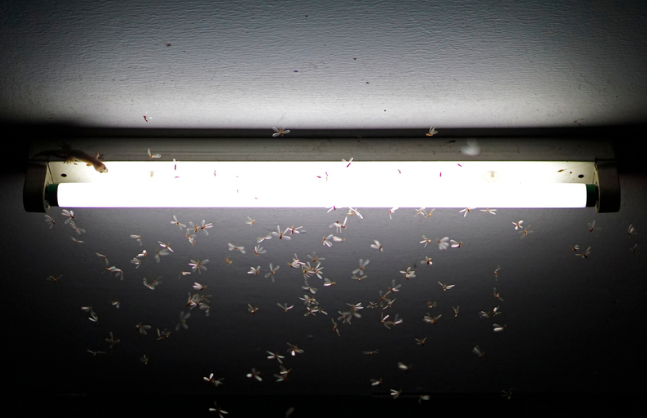Outdoor lighting is a wonderful addition to any home, providing safety, security, and ambiance. However, the inviting glow of lights can attract a variety of insects, creating an annoyance for homeowners. In this article, we’ll explore effective strategies to keep bugs away from lights, allowing you to enjoy the benefits of outdoor illumination without the unwanted company of pests.
Choose Insect-Repellent Bulbs:
One of the simplest ways to deter bugs is by using bulbs that are less attractive to them. Opt for yellow, amber, or warm-colored LED lights, as they are less likely to attract insects compared to cool-toned or white lights. Insects, especially mosquitoes, are less sensitive to these warmer hues.
Install Bug-Repellent Covers:
Consider using bug-repellent covers or shields on your outdoor lights. These covers are designed to filter out certain wavelengths of light that attract insects. They help minimize the visibility of light to bugs while still providing illumination for your outdoor spaces.
Position Lights Strategically:
Think about the placement of your outdoor lights. Position them away from entry points, such as doors and windows, to reduce the likelihood of bugs entering your living spaces. Mounting lights higher can also make them less accessible to flying insects.
Use Motion-Activated Lighting:
Motion-activated lights are not only energy-efficient but can also help reduce bug activity. These lights only illuminate when motion is detected, minimizing the time the lights are on and, consequently, the attraction of bugs.
Employ Citronella Candles or Torches:
Citronella is a natural insect repellent, and incorporating citronella candles or torches into your outdoor lighting scheme can help keep bugs at bay. The aroma repels mosquitoes and other insects, creating a pleasant and bug-free environment.
Regularly Clean and Maintain Lights:
Insects are drawn to the heat and residue that accumulates on light fixtures. Regularly clean your outdoor lights to remove any built-up grime, dead insects, or other debris. This not only enhances the performance of your lights but also reduces their attractiveness to bugs.
Install Bug Zappers:
Bug zappers use ultraviolet light to attract insects and an electric grid to zap them. While effective in reducing the insect population, keep in mind that bug zappers can be noisy and may not be suitable for all outdoor settings.
Plant Insect-Repellent Greenery:
Strategically planting insect-repelling plants near your outdoor lights can create a natural barrier. Plants such as citronella, lavender, basil, and mint emit scents that deter bugs, acting as a botanical defense against unwanted pests.
Adjust Light Intensity:
Dimming your outdoor lights can make them less attractive to insects. If your lights have adjustable brightness settings, consider lowering the intensity during the evening hours when bugs are most active.
Explore Essential Oils:
Essential oils like citronella, eucalyptus, and peppermint are known for their bug-repelling properties. Create DIY oil diffusers or sprays and apply them near your lights to deter insects naturally.
Conclusion:
With a combination of strategic choices, maintenance practices, and natural deterrents, you can minimize the presence of bugs around your outdoor lights. By making thoughtful decisions about the type of lights you use, and their placement, and incorporating bug-repelling elements, you can create an inviting outdoor environment free from the intrusion of unwanted pests.

